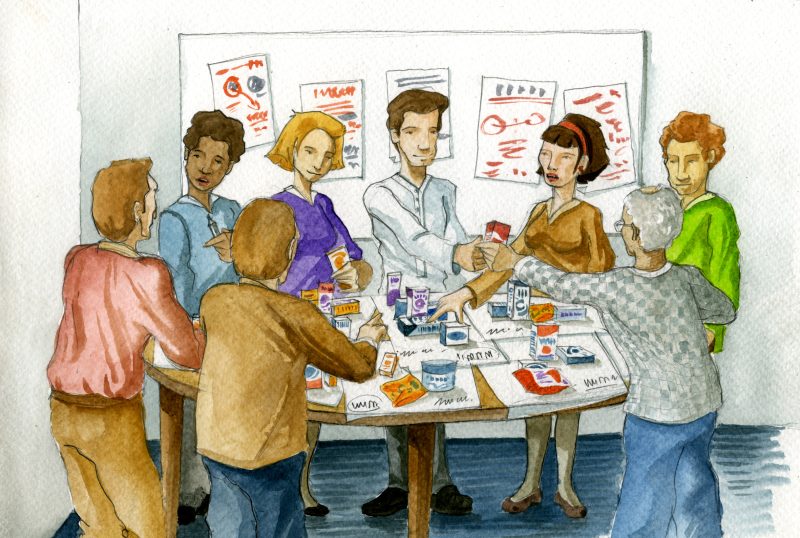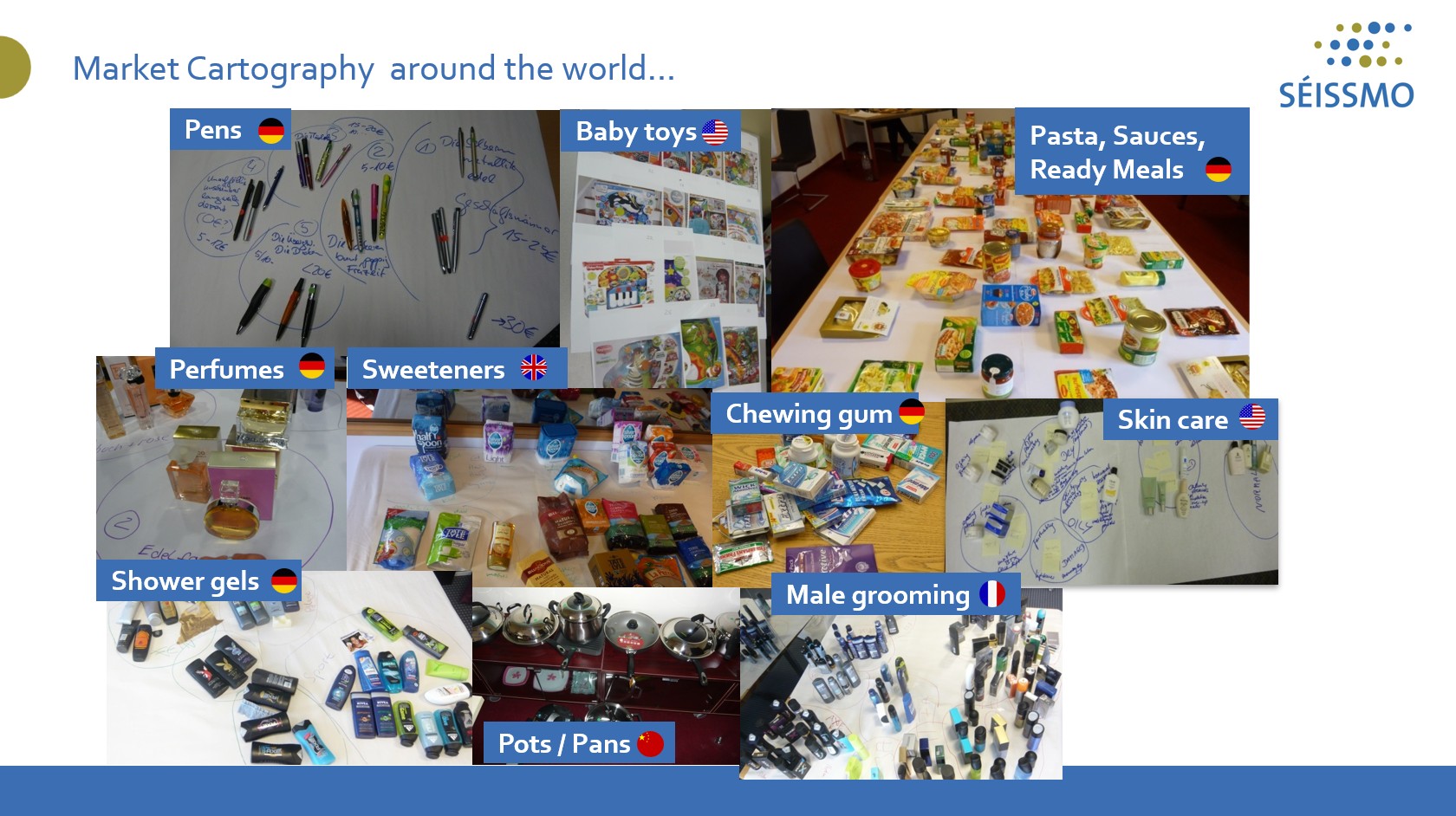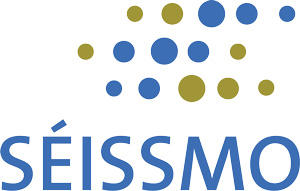Free sorting/
Clustering of brands, categories and
products
Consumers are asked to categorise a number of randomly arranged products
according to their own criteria, so that we can see how they make sense of the
offer, which sub-segments they identify and which are just emerging. These
can be real objects or images shown on the screen using the screen sharing
feature. The resulting clusters are then analysed in more detail, with a
particular focus on the object of study.

We like this method because it is both simple and powerful. It is intuitive and playful. When we were children, weren't we always asked to sort and group things that belonged together?
Also, it is so nice to see people in action, more focused on shuffling and shifting tags/products/brand logos to the right or left than giving seemingly intelligent, often post-rationalised explanations! Analysing the why of their actions is then our job as researchers.
Over the past 20 years, we have used this technique all around the world to assess pencils, deodorants, shower gels, cookware, biscuits, chewing gum, yoghurts, ready meals and much more.

Why is it particularly useful?
- Understanding mental models: It provides researchers with insights into how consumers mentally categorise and structure information. By observing how participants naturally group items, researchers can uncover underlying cognitive frameworks and mental models that influence perception and decision making.
- Identify patterns and associations: Free sorting/clustering can reveal patterns, associations and relationships between items that may not be apparent using traditional survey methods. It allows researchers to uncover hidden connections and understand how participants perceive the relationships between different brands, categories or products.
- Exploring subjective perceptions: Because participants are free to organise items based on their own perceptions and experiences, free sorting/clustering provides a window into subjective perspectives and individual differences in perception. It allows researchers to capture the diversity of viewpoints within a population and explore variations in how people categorise and interpret information.
- Generate hypotheses: The insights gained from free sorting/clustering can be used to develop hypotheses or research questions for further investigation. By identifying common themes or groupings across participants, researchers can generate new ideas and hypotheses to explore in subsequent research studies.
Read more on Exploratory Research
Projective techniques and provocative questions in qualitative research
Usage and Attitudes Studies (U&A) to investigate consumer behaviour
Related articles
The other 3 pillars of our research expertise
Brand & Strategy Research
- Advertising impact
- Product re-launches (360° marketing checks)
- Packaging
- Prices & promotion
- Marketing mix coherence, portfolio
alignment
Shopper Research
- Shopping experience (online and offline)
- Optimal layout, co-creation with Do-It-YourShelf
- Shopping mood, shopping mission
- Loyalty drivers
Product & Packaging Test
- Opportunities for adopting new concepts and ideas (both products and services); addiction factor
- New formulas, flavours, fragrances, textures, colours, shapes, dosage forms, handling, devices, packaging materials, service components, names, claims, etc.
- Customer & user experience

